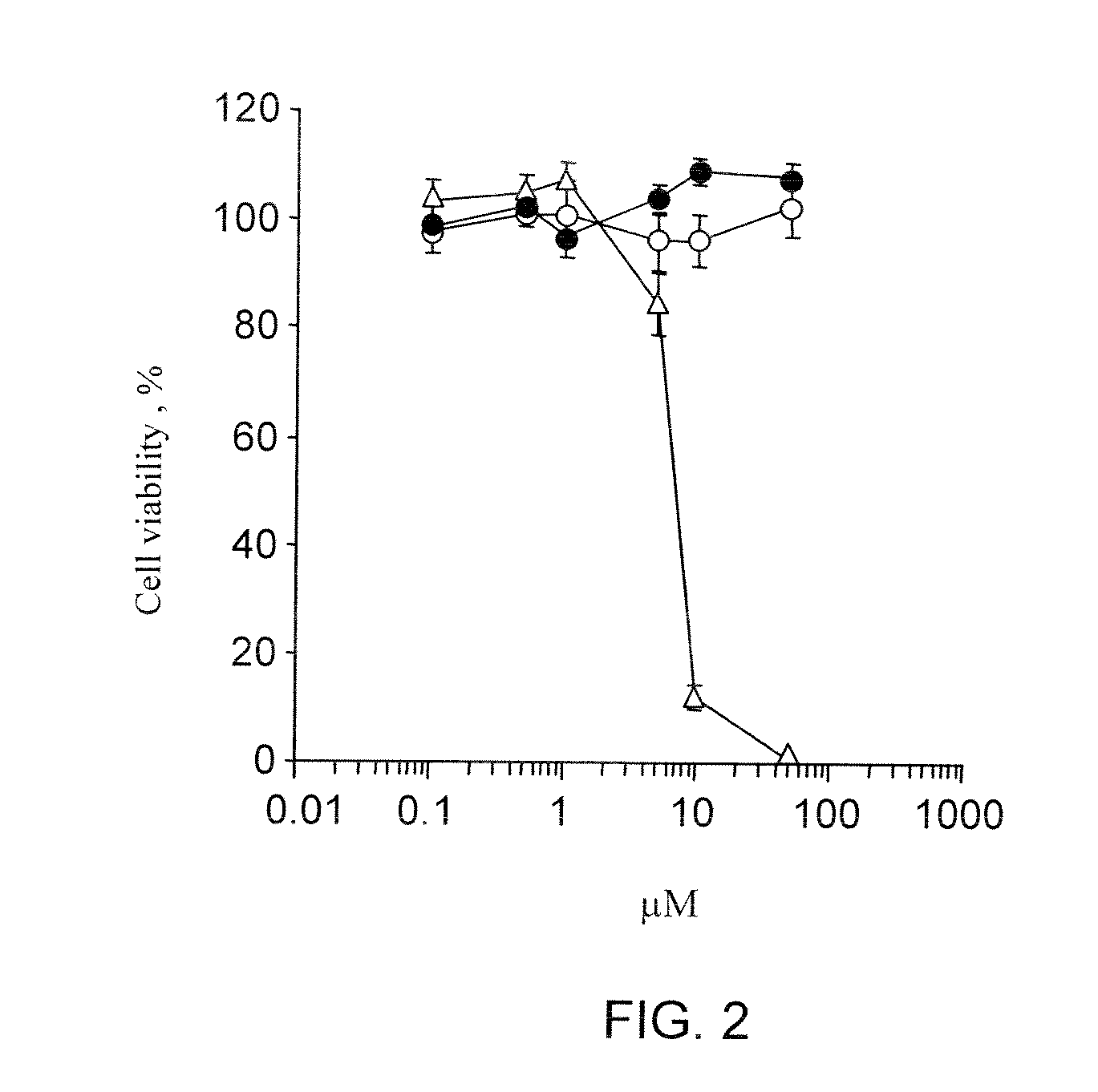Tetrahydro-acridine and dithiolane derivatives
a technology of tetrahydroacridine and dithiolane, which is applied in the field of organic compounds, can solve the problems of inability to control the spread of disease, no therapeutic treatment able to stop the progression of disease,
- Summary
- Abstract
- Description
- Claims
- Application Information
AI Technical Summary
Benefits of technology
Problems solved by technology
Method used
Image
Examples
example 1
[0081]3-Aminomethyl-6-chloro-1,2,3,4-tetrahydroacridin-9-ylamine (16). The synthesis of compound 16 was achieved by condensation of 2-amino-4-chlorobenzonytril with 3-nitromethylcyclohexanone followed by reduction of the nitro group according to Rosini et al. (M. Rosini, A. Antonello, A. Cavalli, M. L. Bolognesi, A. Minarini, G. Marucci, E. Poggesi, A. Leonardi, C. Melchiorre, J. Med. Chem. 2003, 46, 4895.), and the structure was assigned by means of 1H NMR, 13C NMR, gHSQC, and COSY experiments. Total yield 30%; mp (melting point) 285-288° C.; 1H NMR (400 MHz, CD3OD) δ 7.91 (d, J=8.9 Hz, 1H, C8-H), 7.58 (d, J=2.3 Hz, 1H, C5-H), 7.19 (dd, J=9.0, 2.3 Hz, 1H, C7-H), 2.86-2.94 (m, 1H, C4-H), 2.60-2.69 (m, 3H, —CH2NH2, C1-H), 2.19-2.25 (m, 2H, C1-H, C4-H), 2.04-2.13 (m, 1H, C2-H), 1.75-1.83 (m, 1H, C3-H), 1.29-1.39 (m, 1H, C2-H); 13C NMR (100 MHz, CD3OD) δ 158.9, 150.3, 147.7, 135.2, 126.1 (C5), 124.6 (C7), 124.1 (C8), 116.3, 110.4, 48.1 (—CH2NH2), 38.3 (C4), 37.9 (C3), 27.3 (C2), 24.2 (...
examples 2-9
[0082]General procedure for the synthesis of compounds 1-8.
[0083]A solution of the appropriate tetrahydroacridinamine (1 eq) and lipoic acid (1.5 eq) in dry DMF (dimethylformamide) (5 mL), under N2, was cooled to 0° C. and then additioned with 1-(3-dimethylaminopropyl)-3-ethylcarbodiimide hydrochloride (EDCI) (1.2 eq): the mixture was stirred at 0° C. for further 15 minutes and then at room temperature for 2 h in the dark. Solvent was then removed at reduced pressure, avoiding heating up the mixture. An oily residue was obtained which was purified by gravity column.
example 2
[0084]5-[1,2]dithiolan-3-yl-pentanoic acid [2-(1,2,3,4-tetrahydro-acridin-9-ylamino)-ethyl]amide (1). It was synthesized from N1-(1,2,3,4-tetrahydroacridin-9-yl)-ethan-1,2-diamine (9) (G. M. Steinberg, M. L. Mednick, J. Maddox, R. Rice, J Med Chem 1975, 18, 1057) (140 mg). Elution with petroleum ether / CH2Cl2 / MeOH / aqueous 30% ammonia (6:3:1:0.055). afforded 1 as a solid foam: 35% yield; 1H NMR (300 MHz, CD3OD) δ 8.12 (d, J=8.8 Hz, 1H), 7.78 (d, J=8.8 Hz, 1H), 7.58 (t, J=8.2 Hz, 1H), 7.39 (t, J=8.2 Hz, 1H), 3.70 (t, J=6.3 Hz, 2H), 3.28-3.39 (m, 3H), 2.93-3.15 (m, 4H), 2.71-2.79 (m, 2H), 2.26-2.40 (m, 1H), 2.15 (t, J=8.6 Hz, 2H), 1.64-1.93 (m, 5H), 1.30-1.61 (m, 6H); MS (ESI+) m / z 430 (M+H)+. Calculated for C23H31N3OS2: C, 64.30; H, 7.27; N, 9.78; found C, 64.41; H, 7.28; N, 9.75.
PUM
| Property | Measurement | Unit |
|---|---|---|
| body weight | aaaaa | aaaaa |
| body weight | aaaaa | aaaaa |
| temperature | aaaaa | aaaaa |
Abstract
Description
Claims
Application Information
 Login to View More
Login to View More - R&D
- Intellectual Property
- Life Sciences
- Materials
- Tech Scout
- Unparalleled Data Quality
- Higher Quality Content
- 60% Fewer Hallucinations
Browse by: Latest US Patents, China's latest patents, Technical Efficacy Thesaurus, Application Domain, Technology Topic, Popular Technical Reports.
© 2025 PatSnap. All rights reserved.Legal|Privacy policy|Modern Slavery Act Transparency Statement|Sitemap|About US| Contact US: help@patsnap.com



